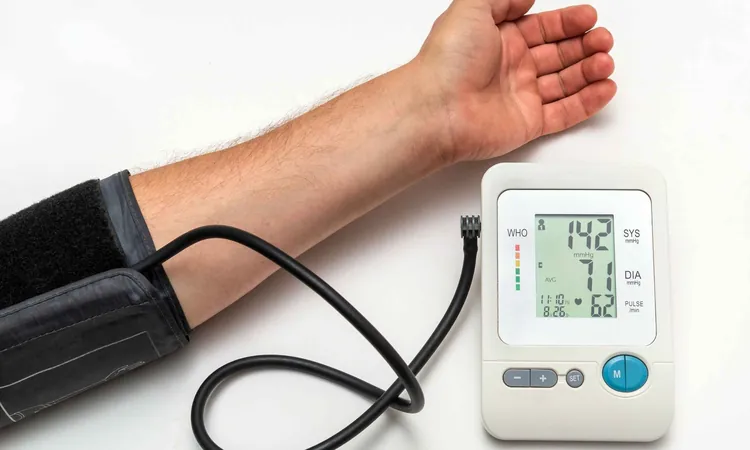
Doctor's Warning: Your Arm Position Could Be Putting Your Health at Risk!
2025-06-24
Author: Siti
A Shocking Discovery About Blood Pressure Measurements
High blood pressure is a silent killer, leading to heart attacks and strokes, but a groundbreaking study at Johns Hopkins reveals that something as simple as your arm position can drastically alter blood pressure readings! Just a two-inch shift could push your numbers into the alarming 'danger zone'.
The Startling Experiment
Led by Dr. Tammy Brady of Johns Hopkins University, this study put common examination practices under a microscope. They found that a patient whose arm dangles down may have blood pressure readings up to 7 millimeters of mercury (mmHg) higher than someone whose arm is comfortably resting on an exam room desk.
How the Study Was Conducted
To mimic real-world conditions, 133 volunteers aged 18 to 80 participated in the trial. Each subject walked for two minutes before sitting quietly, their backs supported, while their blood pressure was measured in different arm positions: desk-supported, on their laps, and dangling by their sides. The results were surprising!
The Disturbing Results
Compared to the ideal desk-supported measurement, the average arm resting on the lap recorded a systolic increase of 3.9 mmHg, while an unsupported arm came in at a shocking 6.5 mmHg higher! This leap can shift someone's diagnosis from 'elevated' to 'stage 2 hypertension'—a potentially life-threatening condition.
Why Accurate Measurements Matter
Nearly half of all U.S. adults are dealing with hypertension, yet the common practice involves quick snapshots that might not reflect true arterial pressure. According to Sherry Liu from the study, even a slight error—from an estimated 123 to 130 systolic—can mean the difference between needing medication or not.
What You Can Do at Home
For those monitoring their blood pressure at home, it's crucial to ensure that your arm is positioned correctly. Many kitchen tables are too low; use a cushion or find a higher counter for accuracy. And remember, using the right cuff size is vital—too narrow a cuff can inflate readings by 5 to 10 mmHg.
Avoiding Misdiagnoses is Key
Incorrect readings can lead to unnecessary medications or, worse, an oversight of real health issues. The right arm position isn't just about getting good data; it could mean the difference in your treatment and overall health. Dr. Brady's team is exploring ways to remind patients and clinicians to ensure proper arm placement, aiming for better health outcomes.
A Call to Action
This research highlights an urgent need for stringent adherence to proper blood pressure measurement protocols. Standardizing arm positions can not only reduce unnecessary prescriptions but also improve the quality of healthcare provided to millions. With these insights, we can help safeguard our cardiovascular health and ensure that every blood pressure reading counts!
Discover More!
Stay informed and up-to-date! Subscribe to our newsletter for more engaging articles and tips on health and wellness.





 Brasil (PT)
Brasil (PT)
 Canada (EN)
Canada (EN)
 Chile (ES)
Chile (ES)
 Česko (CS)
Česko (CS)
 대한민국 (KO)
대한민국 (KO)
 España (ES)
España (ES)
 France (FR)
France (FR)
 Hong Kong (EN)
Hong Kong (EN)
 Italia (IT)
Italia (IT)
 日本 (JA)
日本 (JA)
 Magyarország (HU)
Magyarország (HU)
 Norge (NO)
Norge (NO)
 Polska (PL)
Polska (PL)
 Schweiz (DE)
Schweiz (DE)
 Singapore (EN)
Singapore (EN)
 Sverige (SV)
Sverige (SV)
 Suomi (FI)
Suomi (FI)
 Türkiye (TR)
Türkiye (TR)
 الإمارات العربية المتحدة (AR)
الإمارات العربية المتحدة (AR)